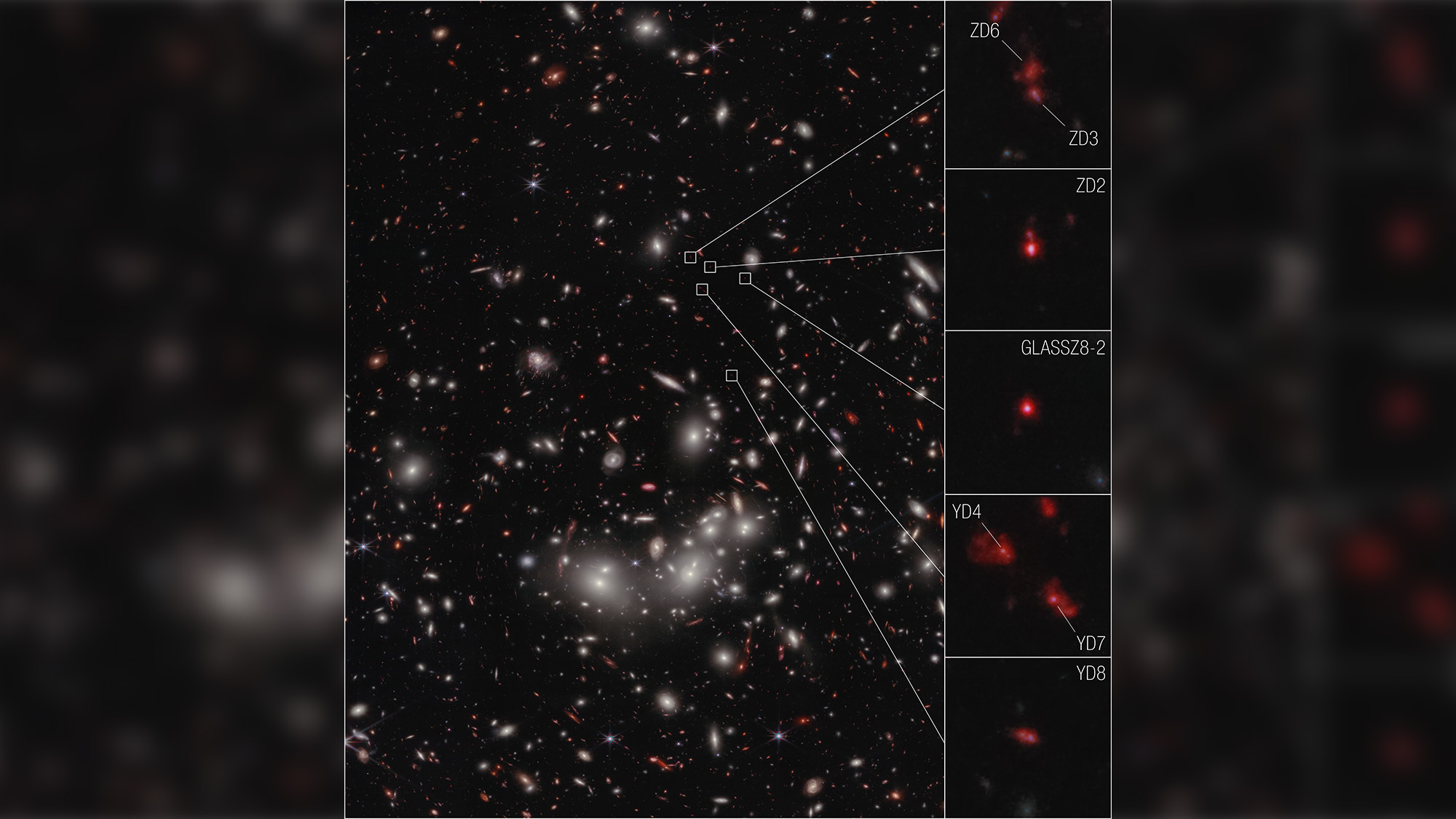

Even the tallest trees, biggest blue whales, and even giant gleaming stars were once babies. Protostars are the hot core of energy that will one day become stars and galaxies. The formative years of our universe’s history, when billions of stars and galaxies formed and assembled after the Big Bang, have so far been beyond our understanding.
[Related: These 6 galaxies are so huge, they’ve been nicknamed ‘universe breakers’]
Now, NASA’s James Webb Space Telescope (JWST) confirmed the distance of a protocluster of seven galaxies that formed only 650 million years after the Big Bang, or what astronomers call redshift 7.9. The findings were published April 24 in the Astrophysical Journal Letters and are the “earliest galaxies yet to be spectroscopically confirmed as part of a developing cluster.”
Based on the data collected, a team of astronomers calculated the nascent cluster’s future development. It will likely grow in size and mass to resemble the Coma Cluster, one of the densest group of galaxies of the modern universe.
“This is a very special, unique site of accelerated galaxy evolution, and Webb gave us the unprecedented ability to measure the velocities of these seven galaxies and confidently confirm that they are bound together in a protocluster,” co-author and IPAC-California Institute of Technology astronomer Takahiro Morishita said in a statement.
JWST’s Near-Infrared Spectrograph (NIRSpec) captured the key measurements to confirm both the galaxies’ collective distance and the high velocities at which they are moving within a halo of dark matter. They’re moving through space at more than two million miles per hour, or over 600 miles per second.
Having this spectral data in hand allowed the astronomers to model and map the future development of the gathering group all the way up to the modern universe. If it does follow the prediction and eventually resemble the Coma Cluster, it could eventually be among the densest known galaxy collections.
“We can see these distant galaxies like small drops of water in different rivers, and we can see that eventually they will all become part of one big, mighty river,” co-author and National Institute of Astrophysics in Italy astronomer Benedetta Vulcani said in a statement.
According to NASA, galaxy clusters are the greatest concentrations of mass in the known universe. They can dramatically warp the fabric of spacetime itself. This warping is called gravitational lensing and can have a magnifying effect for the objects located beyond the cluster. This allows astronomers to see through the cluster as if it were a giant cosmic magnifying glass. The team in this study was able to utilize this enlarging effect and look through Pandora’s Cluster to view the protocluster.
[Related: JWST’s latest new galaxy discoveries mirror the Milky Way.]
Exploring how big clusters like Pandora and Coma first came together has historically been difficult because the expansion of the universe stretches light beyond visible wavelengths into the infrared. JWST’s sophisticated infrared instruments were developed to fill in these gaps at the beginning of the universe’s story.
The team anticipates that future collaboration between JWST and a high-resolution, wide-field survey mission from NASA’s Nancy Grace Roman Space Telescope will allow for even more results on early galaxy clusters. Roman will be able to identify more protocluster galaxy candidates, while JWST can follow up to confirm these findings with its spectroscopic instruments. Currently, the Roman mission is targeted to launch by May 2027.
“It is amazing the science we can now dream of doing, now that we have Webb,” co-author and University of California, Los Angeles astronomer Tommaso Treu said in a statement. “With this small protocluster of seven galaxies, at this great distance, we had a one hundred percent spectroscopic confirmation rate, demonstrating the future potential for mapping dark matter and filling in the timeline of the universe’s early development.”
Correction (August 25, 2023): The story previously stated that the Coma Cluster is a single galaxy, when it is in fact a cluster of almost 1,000 galaxies.
